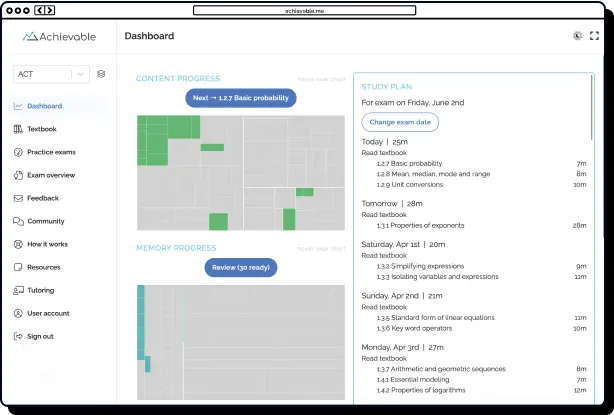
Medical school gap year: Make your story count




Table of contents
- Craft a cohesive narrative with your gap year in application essays
- How to turn your gap year into a compelling story in your med school application
- Transform your gap year experiences into proof of medical school readiness
- Connect your gap year to each med school's mission (and why it matters for your essays)
- Turn red flags into strengths: Showcasing your gap year's transformative impact in essays
- Showcasing gap year growth: Deep insights that strengthen your story
This article is part 5 of 8 of our series on making the most of your medical school gap year, where we provide you with insights on studying for the MCAT, using your time effectively, and translating your experiences into compelling narratives. In part 5, we walk you through how to share your gap year story through your admissions essays and demonstrate growth and maturity.

Craft a cohesive narrative with your gap year in application essays
How to turn your gap year into a compelling story in your med school application
As a pre-med student preparing for your medical school application, you know that admissions committees review thousands of applications each cycle. What truly sets you apart isn't just that you took a gap year, but how thoughtfully and deliberately you used that time - and how effectively you convey its impact. To help you build a standout narrative in your AMCAS or AACOMAS application, use these tailored strategies:
- Clarify your objectives. Begin by explaining your reasons for taking a gap year. Were you seeking meaningful clinical exposure, aiming to strengthen your academic record, or pursuing personal growth through service or research? Make your intent clear so readers understand your decision-making process.
- Demonstrate tangible growth. Don't just list activities. In your Work & Activities section and personal statement, show how each experience equipped you with key skills for medicine. For example:
- Volunteering abroad? Describe how working at a rural clinic expanded your cultural awareness and compassion.
- Conducting research? Highlight your specific contributions and how they deepened your commitment to patient-centered, evidence-based care.
- Reflect intentionally. Share how your gap year experiences solidified your desire to pursue medicine. Did working as an EMT confirm your passion for patient care? Did leading a community initiative help you develop resilience? Use examples that resonate with your journey (comprehensive AMCAS Work and Activities advice).
- Prioritize meaningful involvement. Admissions committees want to see depth, not just breadth. Highlight sustained, impactful engagement and targeted improvement - such as boosting your GPA or gaining significant clinical hours (how to make the most of your gap year before med school, AAMC).
- Be precise and organized. Since AMCAS doesn't have a specific gap year section, log each experience with accurate dates and evolving responsibilities. Label your entries clearly and make sure they're current, ending by August of your matriculation year.
- Showcase key qualities. Use examples from your gap year to illustrate qualities like resilience, leadership, and a patient-centered mindset. Don't just list accomplishments - demonstrate how these experiences prepared you to thrive in medical school (UMHS's guidance on explaining your gap year).
"Admissions committees value gap years most when applicants clearly articulate how their experiences address gaps or weaknesses, and directly connect to readiness for medical training." (AAMC research on gap year value)
Transform your gap year experiences into proof of medical school readiness
Medical schools want to see specific evidence of your skills, self-awareness, and preparation. As an applicant, focus on turning your gap year into concrete stories that showcase your readiness for the rigors of medical training.
Make your story vivid:
- Replace vague claims with clear, detailed examples. For instance:
- Instead of: "I developed resilience."
- Try: "During my mother's chemotherapy, I managed her appointments, balanced multiple jobs, and supported my siblings, coordinating care and providing emotional support."
- Choose examples that highlight your emotional stability and ability to manage challenging situations (gap year medical school application essay samples).
Relate your skills to medicine:
- Draw direct connections between non-medical jobs and medical skills. For example:
- "As a bartender, I learned to triage urgent situations, such as responding to a customer's allergic reaction while keeping service running smoothly - skills that mirror the multitasking and quick decision-making required in medicine." (medical school secondary essay strategies)
Reflect on challenges and growth:
- Frame setbacks as learning opportunities. For example:
- "After failing the MCAT, I overhauled my study habits, developed a disciplined schedule, and started tutoring peers, transforming my approach to both learning and leadership."
- Show how overcoming obstacles led to lasting personal and professional development (compelling med school gap year essay examples).
Draw meaningful insights:
- Connect personal experiences to broader lessons in healthcare. For example:
- "Volunteering as a translator for a patient hesitant about screenings due to immigration fears taught me that building trust means addressing systemic barriers, not just language."
- These reflections demonstrate your understanding of the complexities of patient care (comprehensive medical school essay advice).
Pull quote:"A glimpse of who this student is, what they have been through, and how they resiliently used adversity as inspiration" - the hallmark of outstanding personal statements (Inspira Advantage's top med school personal statement examples).
The most effective essays combine compelling stories and vivid details to show exactly how your gap year has equipped you for a future in medicine.

Connect your gap year to each med school's mission (and why it matters for your essays)
As you prepare your secondary essays, remember that medical schools value applicants who show clear alignment with their unique missions and programs. Demonstrating how your gap year experiences fit with a school's specific values helps you stand out from other pre-meds.
Do your homework on each institution. According to the 2025 Shemmassian Consulting guide to medical school secondary essays, applicants who connect their gap year experiences to a school's distinct opportunities are more likely to convey genuine motivation.
Example:
- If you volunteered at a women's health clinic in Mexico and became fluent in Spanish, highlight how this experience prepares you to contribute to student-run clinics for underserved populations at schools like Columbia.
With most applicants taking a gap year, only those who forge specific links to each program will be memorable (MedschoolCoach on gap years before medical school).
How to make your essays purposeful:
- Research each school's mission and offerings.
- Identify growth from your gap year relevant to those priorities.
- Draw explicit connections: e.g., "My gap year equipped me to contribute X to your campus."
- Be open about your journey. Candidly discussing challenges and growth signals self-awareness and thoughtful reflection (BeMo Academic Consulting gap year essay guide).
"Essays that mention specific school programs, faculty, or philosophies, and connect them to real gap year choices, show you're not just applying everywhere, you're choosing them."
By tying your gap year to a school's mission, you help the admissions committee envision you as an engaged member of their community.
Turn red flags into strengths: Showcasing your gap year's transformative impact in essays
Medical school admissions committees are looking for growth, self-awareness, and resilience - qualities you can showcase if you've faced setbacks. Use your gap year to turn potential red flags into evidence of readiness.
A strong application doesn't gloss over challenges; it demonstrates how you responded. As Shemmassian Consulting notes, be honest about your time off and use it as a springboard for growth (gap year and red flag advice from Shemmassian Consulting).
How to address red flags:
- Acknowledge challenges directly.
- Take responsibility and describe your response. Be specific in detailing your actions.
- Show measurable improvement. For example, if you retook the MCAT or completed more coursework, explain what new skills or habits you gained.
- Connect your progress to your future medical career.
Avoid vague explanations - admissions reviewers appreciate candor and concrete evidence of growth (Elite Medical Prep on addressing red flags). Instead of just mentioning a higher MCAT score, describe the study strategies you developed and how they now support your ongoing academic success.
Remember, nearly half of all medical school applicants take time off before applying. When approached with honesty and reflection, your gap year can transform challenges into strengths that bolster your candidacy (MedEdits gap year advice).
Showcasing gap year growth: Deep insights that strengthen your story
As a future medical student, genuine self-reflection and specific examples of development will make your application memorable. Dig deeply into what motivated your gap year and what you learned along the way.
Share the authentic reasons for your decisions - whether driven by curiosity, the desire to address weaknesses, or to pursue a particular interest. Elite Medical Prep's guide on explaining gap years in interviews emphasizes that honesty is far more compelling than generic answers.
Be explicit in relating your gap year experiences to your future in medicine. If you became proficient in Spanish by volunteering in Mexico, explain how this skill prepares you to serve diverse patients. Or, if you studied nutrition science, describe how this knowledge will help you offer holistic care (Columbia's Institute of Human Nutrition: reasons to take a gap year before med school).
Don't shy away from discussing setbacks - show how your gap year helped you turn weaknesses into strengths. BeMo Academic Consulting gap year essay examples feature applicants who arrived at medical school better prepared and more resilient.
Make your skills tangible. Did you learn empathy working with uninsured patients? Did solo travel boost your problem-solving abilities? Use specific stories, as AAMC's tips for a meaningful gap year suggest.
The best narratives come full circle: they show what you did, what you learned, and how you'll contribute to a medical school community. Explicitly connect your growth to each school's mission and offerings (Shemmassian Consulting on linking experiences to school mission). This demonstrates that your journey was intentional and well-aligned with your medical career goals.
Click here for part 6, "Master gap year conversations in medical school interviews." Read on for strategies on making a powerful impression and addressing any potential concerns.

